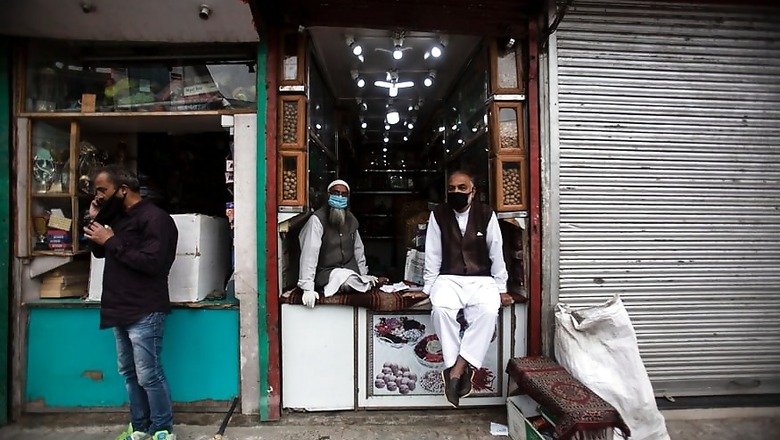States' Borrowings Soar 51% Over Last Year, Maha, TN and K'taka Account for 38% of Incremental Loans

views
The coronavirus pandemic-stricken states have borrowed a whopping Rs 2.97 lakh crore so far this financial year, which is as much as 51 per cent more than the corresponding period a year ago. But, the massive spike is led by just three states – Karnataka, which borrowed Rs 23,000 crore, a 475 per cent more than last year’s Rs 4,000 crore; Maharashtra borrowed 200 per cent more at Rs 37,500 crore as against Rs 12,500 crore last year; and Tamil Nadu borrowed Rs 46,000 crore or 117 per cent over Rs 21,190 crore of last year.
This means that these three states contributed as much as 38 per cent of the total incremental borrowing by the states so far this fiscal, according to domestic rating agency CARE. However, heavily indebted Uttar Pradesh borrowed 43 per cent less than what it had borrowed last fiscal till September 8.
“While UP’s borrowings so far this fiscal has been 43 per cent less than last year, there has been a marked spike in borrowings by Karnataka (475 per per cent), Maharashtra (200 per cent) and Tamil Nadu (117 per cent) so far in the current fiscal year,” the report said. It added that these three states account for 38 per cent of the total incremental borrowings so far, which is 12 per cent more than their share a year ago.
The cash-starved states are grappling with rising expenses due to the pandemic. But, the biggest negative surprise came from the Centre, which went back on its commitment to compensate them at 14 per cent for the revenue losses arising from GST. At the last GST Council meeting, the Centre gave two options to the states to bridge the revenue gap which is aggravated by a 40 per cent plunge in GST collection.
At the August 27 meeting, the Centre admitted that states will together face a revenue shortfall of Rs 3 lakh crore but refused to pay them; it instead offered them two options to borrow. The Centre estimates that states’ GST revenue gap is Rs 3 lakh crore, while cess collections are likely to be around Rs 65,000 crore, leaving a shortfall of Rs 2.35 lakh crore, of which Rs 97,000 crore is due to shortfall in GST. Accordingly, they are given two options – a special RBI window for Rs 97,000 crore at a reasonable rate of interest with a five-year tenure, or borrowing the entire Rs 2.35 lakh crore gap from the RBI.
According to CARE, between April 7 and September 8, 26 states and two Union territories have cumulatively raised Rs 2.97 lakh crore via market borrowings, which is a 51 per cent more than the amount they had raised in the corresponding period of 2019-20 when it had stood at Rs 1.97 lakh crore. On Tuesday, 13 states raised Rs 15,675 crore at the auction of state government securities, which is Rs 1,500 crore more than the notified amount as Haryana and Maharashtra exercised the greenshoe.
While Haryana accepted an additional Rs 500 crore of the 10-year loan, Maharashtra accepted a further Rs 1,000 crore of the 11-year security. Of the 26 states that have borrowed so far this fiscal, nine have seen their market borrowings increase by 50 per cent over last fiscal, while five of them borrowed 20-41 per cent more and three of them between 4-13 per cent, the CARE report said.
At the same time, eight states UP, Punjab, Manipur, Uttrakhand, Assam, Bihar, Arunachal Pradesh and Himachal Pradesh have so far borrowed less than a year ago. In more worries to the states, their borrowing cost has risen to a four-month high now with the weighted average yield of their debt jumping 8 basis points to 6.57 per cent at Tuesday’s auctions over last week.

















Comments
0 comment